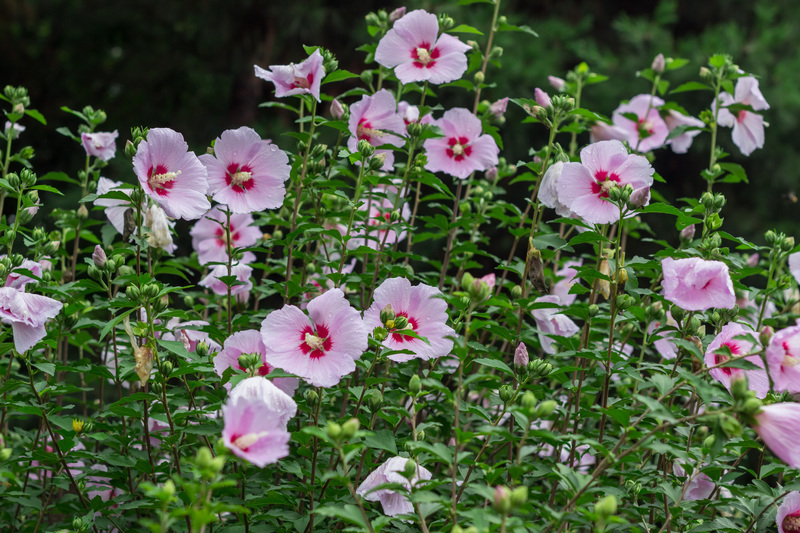Evergreen Climbers for Shade: Breathing New Life into Shadows
Posted on 16/05/2025
Evergreen Climbers for Shade: Breathing New Life into Shadows
Transform shadowy corners and dull, dim areas of your garden into lush, living tapestries with the magic of evergreen climbers for shade. These versatile plants provide color, privacy, and interest all year round--especially where many other selections struggle. In this comprehensive guide, we'll explore how you can use shade-loving evergreen climbers to create enchanting, low-maintenance outdoor sanctuaries.
Why Choose Evergreen Climbers for Shady Spaces?
Not every garden enjoys full sun--many have north-facing walls, tall fences, mature trees or shadow-casting buildings that create extensive shaded zones. For such gardens, shade-tolerant evergreen climbers are a blessing. They offer:
- Year-round foliage for constant color and structure
- Vertical interest, breaking up blank walls or fences
- Wildlife habitat--providing food and shelter for birds and beneficial insects
- Privacy screens to cover unsightly areas
- Low-maintenance gardens, especially important in tricky shaded areas
Top Evergreen Climbers for Shade: Discover the Best Varieties
Some evergreens are perfectly adapted for shadows, thriving where others fail. Here are the most reliable and attractive shade-loving evergreen climbers to consider:
1. Hedera helix (English Ivy)
- Tough and classic: English Ivy is the archetype for evergreen climbing plants for shade.
- Foliage: Glossy, deep-green leaves--many variegated cultivars available too.
- Growth: Self-clinging, needs no support.
- Tips: Prune regularly to avoid invasiveness--perfect for walls, fences, even as ground cover.
English Ivy is unbeatable for rapid coverage, resilience, and adaptability--making it a staple among evergreen climbers for shade.
2. Trachelospermum jasminoides (Star Jasmine)
- Appeal: Dark, glossy leaves with clusters of fragrant, star-shaped white flowers through summer.
- Shade tolerance: Thrives in partial or dappled shade--full shade reduces flowering but foliage remains lush.
- Support: Needs trellis or wire to climb fences and walls.
Star Jasmine brings a stunning blend of evergreen beauty and intoxicating fragrance, making it a top pick for shaded seating areas or entrances.
3. Lonicera henryi (Evergreen Honeysuckle)
- Highlight: Semi-evergreen to fully evergreen, with narrow, glossy leaves and clusters of yellow, red-tinged flowers followed by black berries.
- Suits: Partial or filtered shade--ideal for pergolas or fences.
With its elegant foliage and floral bonuses, Evergreen Honeysuckle is a must for wildlife-friendly shady gardens.
4. Clematis armandii (Evergreen Clematis)
- Visual impact: Long, leathery green leaves and masses of almond-scented white or pale pink star-flowers in early spring.
- Shade capacity: Does best in partial shade, avoiding full, hot sun on its roots.
- Care: Needs wires or trellis and plenty of room to spread.
This vigorous climber quickly cloaks shady arbors and walls in fragrant blossom and clean foliage.
5. Pyracantha (Firethorn)
- Foliage and Fruit: Bushy, spiny branches with glossy leaves, smothered in white flowers followed by vibrant berries in winter.
- Use: Trained as a wall shrub or climber, tolerates considerable shade.
- Wildlife value: Excellent for songbirds and pollinators alike.
Firethorn is prized among evergreen climbers for shade, delivering security, color, and ecological value.
6. Euonymus fortunei 'Silver Queen' or 'Emerald Gaiety'
- Features: Small, variegated foliage for all-year vibrance--climbs when given support or used as a trailing groundcover.
- Shade capacity: Thrives and keeps color in deep shade.
An excellent, non-invasive choice for those seeking low-growing evergreen climbers for shaded corners.
7. Passiflora caerulea (Blue Passionflower - semi-evergreen)
- Show-stopping: Striking filigree leaves with bizarrely beautiful blue and white flowers.
- Shade tolerance: Performs well in light to partial shade, and may retain some leaves in milder seasons.
Adds exotic charm and feeds pollinators--opt for it in milder, sheltered spots where light shade prevails!

How to Select and Plant Evergreen Climbers for Shady Sites
Choosing the right evergreen climbing plant for shade depends on several factors:
- Level of shade: Is it deep shade (e.g., under trees), partial, or dappled? Some evergreens like Ivy thrive in deep shade, but most flower best with at least some sun.
- Soil conditions: Is it dry, moist, or prone to dampness? Many climbers prefer humus-rich, well-drained soils, but some are forgiving of dry or poor ground.
- Available support: Self-clinging (e.g., Ivy) or twining (e.g., Star Jasmine) may need trellises, wires, or mesh.
- Growth vigor: Consider mature spread and height--some are fast-growing, others more restrained.
- Purpose: Are you looking for privacy, year-round color, cover for walls, or support for wildlife?
Planting Tips for Success
- Prepare the soil by digging in ample compost or leaf mold, even in shaded positions.
- Plant deeply, especially for climbers like Clematis and Jasmine--aim to cover the root ball by at least 2-3 inches.
- Mulch well annually to retain soil moisture and feed the roots.
- Provide sturdy support if required--install wires or trellis before planting.
- Water during dry periods, especially while the plant is establishing.
Combining Evergreen Shade Climbers with Other Plants
An enchanting, multi-layered effect can be created by mixing evergreen climbing plants for shade with other shade-loving perennials, shrubs, or bulbs. Try these combinations:
- Pair evergreen climbers with woodland favorites like ferns, hellebores, hostas, and cyclamen for a tapestry of textures under trees or in north-facing beds.
- Interplant with flowering shade shrubs such as hydrangea and camellia for seasonal flower displays backed by the constancy of evergreens.
- Mix climbers of different types (e.g., Ivy with Star Jasmine) for a contrast in leaf shapes, colors, and even scents throughout the year.
Best Situations for Evergreen Climbers in Shade
- North and east-facing walls or fences: Add color and interest where most sun-lovers fail.
- Under mature trees: Use climbers to clothe trunks or climb through low branches for a woodland effect.
- Shaded pergolas, arches, or arbours: Create green havens above garden seating and walkways.
- Covering sheds, garages or unattractive outbuildings: Blend utilitarian structures into the surrounding greenery.
- Urban or courtyard gardens: Soften hard landscaping with vertical greenery in tight, shaded spots.
Maintenance and Care for Evergreen Shade Climbers
Evergreen climbers for shade are mostly low effort, but a few key tasks will help them stay healthy and beautiful:
- Prune yearly: Tidy up straggly growth, remove any dead material, and shape as needed. Some (like Ivy) benefit from regular trimming to keep them in check.
- Feed annually in spring: Use a balanced slow-release fertilizer to promote lush growth and, if applicable, flowering/berrying.
- Mulch in early spring: Conserves moisture and improves soil fertility--especially vital beneath trees where water competition is high.
- Check supports: Inspect wires and frames periodically, repairing any damage so vigorous climbers don't pull them down.
Pest and Problem Watch
- Slugs/Snails: May nibble on fresh growth of young climbers--use barriers or traps as needed.
- Fungal Issues: Humid, shaded areas can foster mildew--ensure good air circulation and prune out congested growth.
- Overgrowth: Ivy and Honeysuckle may become invasive--trim regularly to maintain shape and prevent them from overtaking neighbouring plants.
Creative Uses: Inspiring Ideas with Evergreen Climbing Plants for Shade
Not sure where to start? Here are inspiring ways to use evergreen climbers in shady environments:
- Living green walls: Drape a privacy screen in year-round foliage outside a window or on a balcony.
- Secret garden archways: Guide climbers over an arch to create a shady, secluded passage.
- Outdoor "rooms": Separate garden sections with trellis panels smothered in verdant leaves for tranquility and intrigue.
- Wildlife retreat: Train Honeysuckle or Firethorn up a shady fence for berries, flowers, and nesting potential for birds and pollinators.
- Disguising eyesores: Soften bins, sheds, or compost bins with carefree climbers like Ivy or Euonymus.

Frequently Asked Questions about Evergreen Climbers for Shade
Q: Can evergreen climbers survive in total shade?
A: Some, such as English Ivy and certain Euonymus cultivars, will thrive even in deep, dry shade. Most, however, prefer at least partial or dappled shade for best growth and flowering.
Q: Are evergreen shade climbers high maintenance?
A: Generally, they are low maintenance once established. Main tasks are occasional pruning, annual feeding, and checking support structures.
Q: Will evergreen climbers damage walls?
A: Self-clinging types like Ivy can penetrate cracks and mortar, so use with care. Most twining climbers and those grown on trellis or wires are gentle on masonry.
Q: Which evergreen climber is best for fragrance in the shade?
A: Trachelospermum jasminoides (Star Jasmine) and Clematis armandii both offer delicious scent and evergreen foliage, performing admirably in partial shade.
Conclusion: Elevate Shadowy Spaces with Evergreen Climbers
Don't let shaded corners remain lifeless or forgotten--by choosing from the wide array of evergreen climbers for shade, you can give new purpose, structure, and beauty to the gloomiest parts of your garden. These plants offer a dynamic solution for privacy, wildlife, and year-round elegance, with minimal upkeep once established. Whether covering fences with glossy leaves, trailing up old trees, or framing garden paths in emerald abundance, evergreen climbing plants for shade breathe vitality and serenity into any landscape. Choose your favorites, and watch the shadows turn green!

